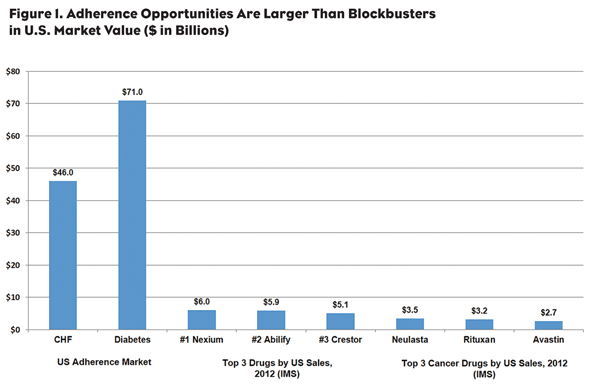What is one of the hottest topics among pharmaceutical and medical device companies looking for a way to grow or even maintain top line revenues? In three words, Value Added Services (VAS). Creating these programs does come with significant challenges, such as demonstrating the value created—whether as a service wrap in conjunction with a product or as a stand-alone service—and capturing that value as a revenue stream.
The problem of dwindling product pipelines is exacerbated by the challenges confronting manufacturers in marketing existing products. As the customer base evolves, traditional decision makers, such as physicians, with whom companies built long-standing profitable relationships, are losing their influence. This is especially true within the large integrated healthcare delivery organizations—where many of them are now employed.
Providers are under pressure as they face reduced Medicare reimbursement rates and fiscal penalties for failing to meet performance targets related to hospital readmissions and “never events.” Additional burdens include frequent announcements by pharmacy benefit managers (PBMs), health technology assessment (HTA) bodies and other payers about more restrictive formularies—while annual price increases are much harder to achieve.
As the market evolves, providers implement alternative care delivery models—accountable care organizations (ACOs), patient-centered medical homes (PCMH), population health and bundled pricing—that impose financial accountability for care cost and quality. As a result, providers are receptive to solutions that promise to help them manage those outcomes.
Simply put, the concept of keeping patients out of acute care is so radical for most providers that disease management offerings have genuine appeal. Hospitals, after all, were never intended to be destinations of choice.
But healthcare providers are not the only stakeholders incentivized to manage outcomes. Employers have developed a keener interest in treatment outcomes, as they now cover an increasing portion of the costs.
In recent years, employer-sponsored wellness programs proliferated and encouraged patients (financially and socially) to manage their lifestyles and diseases as a means of minimizing future complications and costs. The increased focus on improving long-term outcomes creates a sizeable market opportunity for broader approaches to managing wellness and disease through programs that complement traditional therapeutics. Today, existing industry stakeholders, new entrants and non-traditional competitors (i.e., PBMs1, payers2 and large integrated distribution companies3) are studying or entering the competition.
Disease management programs have been tried before—with limited success. But this new wave is different. First, it leverages emerging mobile/handheld technologies and the Internet to connect with patients, caregivers and physicians through multiple channels. Secondly, the awareness of both the need and benefits of programs has increased to the point at which stakeholders have become receptive.
Two Paths to Capturing Value
The initiatives currently tested are marketed in two broad ways:
The first approach includes programs marketed as a service wrap around a particular product that seeks to promote adherence, resulting in improved effectiveness and increased sales. Several such programs exist, and they aim to improve chronic conditions like diabetes and chronic obstructive pulmonary disease (COPD). Why are they important? Research shows that the revenue opportunity left on the table due to poor adherence in certain chronic diseases surpasses the sales of drugs for some major cancers!4,5
Better adherence not only results in more manufacturer sales, but also leads to better outcomes that benefit patients and payers. And if companies can get patients to take drugs as prescribed, the potential incremental revenue would mitigate a long list of other problems squeezing the balance sheet—and improve patient outcomes as well (see Figure 1).
Examples of the types of VAS available include:
- Basic disease and treatment educational materials available on a website.
- Medication reminders texted to a mobile phone.
- Behavior modification and patient activation tools.
- Inbound and outbound call centers staffed by nurse navigators to answer questions and coach patients.
- Bluetooth-enabled inhalers that track patients taking their meds and share the data with their physicians.
The second approach encompasses initiatives created by organizations looking to VAS as a way to create discrete new revenue streams. Supported by evidence of improved outcomes, they would like to sell these programs to patients, providers and payers who recognize the potential to decrease the overall cost of care or improve outcomes without increasing total cost.
These services are “product agnostic,” too, and therefore don’t depend on driving product sales to be financially successful. To date, most companies with such offerings say they are in pilot phase—to prove concept viability and learn to optimize service design and delivery. Companies can fine tune the business model and learn from practical, non-theoretical “field-based” experience. An example: Care4Today, which creates programs targeting heart health, orthopedics and mental health solutions.
Considerations for Implementation
Companies must think about how they implement these programs, regardless of the strategic objective. One way: Through organizational structure. Many different models are now employed, each with their own challenges and rewards. For instance:
- Vree Health is a wholly owned subsidiary of Merck, yet independent. Their products and services are designed to complement hospitals’ processes and existing infrastructure; better connect with patients and providers; and enable quality and outcome improvements related to 30-day readmission rates.
- Janssen has created a separate group within its walls and is allowing it to create its own culture and practices. It has been described as a startup within a large organization.
Such innovative groups reside in different parts of the organization, often as a result of where they germinated and from whom they receive their funding. For example, AstraZeneca’s Innovative Pharmaceuticals Group is part of research and development (R&D), while in other companies, these groups are funded by the commercial organization or at the corporate level.
Pharmaceutical companies are not, however, the only segment exploring the potential VAS market. Others include many non-traditional competitors, such as data management companies, wellness program providers, and retail vendors including pharmacy chains, private payer organizations, insurers and PBMs, as well as integrated delivery networks (IDNs) and providers forming ACOs.
The multiple new technologies needed to deliver VAS also call for an investment in novel capabilities—which requires skills and disciplines that may not be abundant. As companies apply lessons learned from other industries, they may need to integrate talents and skills recruited externally.
Validate the Value
Through clear, compelling evidence, companies need to validate the real value of these disease management programs. Given the financial pressures facing many healthcare providers, risk-based contracting may be required to encourage adoption of such programs. Payment models, which allow providers and payers to share in the benefits and risks associated with a number of chronic disease management products have been introduced in recent years—such contractual arrangements may become more prevalent in the future. Per member per month (PMPM) arrangements are also fairly common, In this case, the provider or payer pays a monthly fee for each patient using the service.
While straightforward to administer, the risk of these programs is borne by the provider/payer, requiring an upfront cash outflow, which is unattractive in a cost-containment environment. More novel and complicated arrangements—in which the financial value realized through a disease management program is shared between the supplier and customer—are becoming more popular as they delay payment until value is actually created. These types of at-risk arrangements more closely tie the incentives to the outcomes.
For example, Merck and Cigna created the first national outcomes-based contract between a pharmaceutical company and an insurer. The arrangement demonstrated an increased percentage of type 2 diabetics who were able to control their blood sugar levels by taking their medications appropriately.6 Savings of as much as $8,000 per person were obtained as a result.
Moving Forward With VAS
The renewed emphasis on—and early success in—creating value beyond the physical product presents an exciting opportunity to improve financial performance. This is a big strategic choice that requires a well-crafted and analytically rigorous strategy to define why, how and where you are going to compete. Several other questions companies need to consider in evaluating this opportunity include:
- What skills, knowledge and expertise do we have, which will enable us to be successful and create sustainable, differentiated value?
- How do we create an environment and structure that will allow for an innovative, potentially risk-based business model to flourish?
- How do we measure success and the return on our investment when the payoff is dependent on numerous factors outside our control?
A well thought out decision to proceed with VAS is only the beginning. To make programs operational, they need to be supported by the development and implementation of new capabilities—and by leveraging emerging technologies and behavioral sciences. Lastly, the cultural requirements for promoting innovation and new skills within existing businesses needs careful thought.
As companies evaluate adjacencies and complementary businesses in pursuit of enhanced profitability and competitive position, product service wraps and related services are likely candidates for consideration. A dual focus on strategy and implementation is required to ensure the alignment, infrastructure and capabilities are in place to succeed in a highly volatile global marketplace.
References:
1. Mattke, Soeren; Klautzer, Lisa; Mengistu, Tewodaj, A New Commercial Model for Big Pharma in the Postblockbuster World. RAND Corporation, 2012. (http://www.rand.org/pubs/occasional_papers/OP381.html)
2. Top Medicines by Non-Discounted Spending (U.S.), IMS Health, May 2013. (IMS U.S. Top Meds 2012.pdf)
3. McKesson Health Solutions, Diabetes DM Program Reduces Inpatient Stays. (www.McKesson.com)
4. Mattke, Soeren; Klautzer, Lisa; Mengistu, Tewodaj, A New Commercial Model for Big Pharma in the Postblockbuster World. RAND Corporation, 2012. (http://www.rand.org/pubs/occasional_papers/OP381.html)
5. Top Medicines by Non-Discounted Spending (U.S.), IMS Health, May 2013. (IMS U.S. Top Meds 2012.pdf)
6. http://newsroom.cigna.com/article_display.cfm?article_id=1264.








